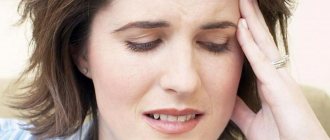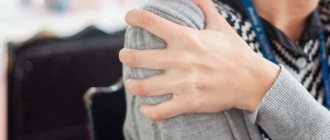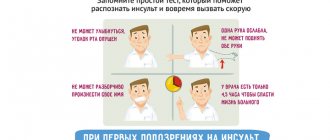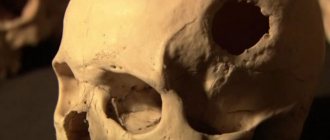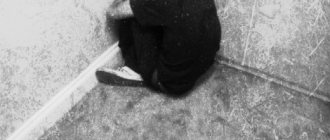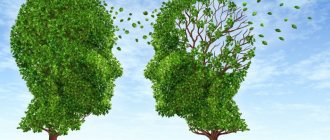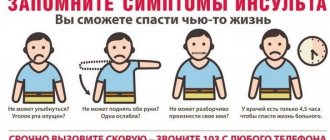Stroke is a pathology of the blood supply to the brain. Doctors distinguish two types of strokes: ischemic and hemorrhagic. Ischemic stroke occurs due to blockage of the arteries.
In this case, part of the brain does not receive oxygen, the cells die, and part of the organ becomes necrotic. With a hemorrhagic stroke, one of the arteries ruptures, hemorrhage and hematoma formation.
Any part of the brain can be affected. One of the variants of the pathology is a stroke of the left side; the consequences depend on the severity of the symptoms and the time during which first aid measures are taken. Read more about this, as well as about how long people live after a left-sided stroke.
Characteristics of the disease
Stroke is an extremely dangerous disease that develops against the background of pathology of the vessels supplying the brain with blood. Their rupture or blockage causes necrosis of certain areas of the brain.
A right-sided stroke is a consequence of impaired blood supply to the right hemisphere of the head.
Attention! The opinion and reviews of doctors are as follows: a stroke on the right side is less easily diagnosed at an early stage. The patient's speech may remain intelligible, since the speech center of right-handed people is located in the left hemisphere, and the diagnosis may be made incorrectly.
However, the longer the cause of a stroke remains unclear, the more extensive the area of the brain will be affected, and, therefore, the more severe the consequences.
These consequences can be minimized only by providing competent assistance to the victim in the first 3 to 6 hours after the incident.
Symptoms
- Limited movement (weakness or paralysis) on the left side of the body, tingling or numbness in the extremities.
- Decreased tone of the facial muscles on the left side: the left side of the lip drops down, the left eyelid droops.
- Visual and hearing impairment on the left side.
- Difficulties with the perception of one’s body on the left side: the length of the limbs, their number and presence, the distance from them to the nearest objects - these are the questions that can confuse the victim.
- Loss of orientation in space, difficulty determining the size of objects.
- Impaired coordination of movements.
- Lack of sensation in the left half of the body.
- Speech is impaired only in left-handed people.
- Breathing problems: shortness of breath, irregular breathing rhythm.
- Absent-mindedness, problems with short-term memory: a person cannot answer the question of what he did an hour ago.
- General fatigue.
- Nausea, vomiting.
- Headache, dizziness.
- Loss of consciousness.
- Cramps.
According to WHO, about 80% of strokes can be prevented.
The main preventive measures are a balanced diet, regular physical activity, quitting smoking, monitoring blood pressure, lipid and blood sugar levels.
Causes
The development of the disease can be triggered by:
- High blood pressure.
- Rheumatism of the heart.
- Atherosclerosis or cerebral aneurysm.
- Vascular tumors.
- Depression.
- Taking narcotic drugs.
- Alcoholism.
- Tobacco smoking.
- Previous myocardial infarction.
Left side stroke and its features
Each hemisphere of the brain performs specific functions.
Some of them are duplicated, for example, vision, hearing, motor activity, smell, skin sensitivity, while the hemisphere transmits information using a nerve impulse to the opposite part of the body. So, with a stroke on the left side of the brain, the right half of the body suffers. The functions for which the left hemisphere is solely responsible are also lost - speech, logic, memory, thinking, information perception, reading, writing and analytical skills. Left-sided stroke is characterized by symptoms that can be grouped into three groups: general cerebral, focal and autonomic.
General cerebral signs are present regardless of which hemisphere of the brain is affected. At the beginning of the attack, the patient appears:
- Strong headache;
- nausea, vomiting;
- dizziness;
- loss of consciousness.
You can distinguish a left-sided stroke from a right-sided one by the manifestation of focal signs, which have their own characteristics:
- right-sided paralysis of one limb or the entire half of the body;
- decreased sensitivity of the skin on the right side of the body;
- distortion of the right half of the face;
- speech disorder;
- lack of perception of information from nearby people;
- memory loss regarding recent events, information about yourself and loved ones;
- loss of balance, coordination of movements;
- decreased vision and hearing on the right side.
The symptoms of stroke described above at the time of the attack are supplemented by autonomic disorders:
- dry mouth;
- general weakness;
- increased temperature;
- panicky mood;
- increased sweating;
- rapid heartbeat;
- difficulty breathing;
- pallor or, conversely, redness of the skin.
With a left-sided stroke, a person loses the ability to process, analyze and remember incoming information, as well as draw logical conclusions and look for optimal ways to solve problems.
Treatment of the disease
The further course and outcome of the stroke depends on how urgently first aid is provided to the victim:
- In case of a sudden stroke, the patient should be placed on a flat surface with his head and shoulders elevated.
- After removing constricting accessories or items of clothing (tie, belt, jewelry), you must ensure that excess vomit or saliva does not remain in the mouth: a person may simply choke.
In case of hemorrhagic stroke, cold should be applied to the head (on the part of it that is opposite to the paralyzed part of the body).
Treatment of stroke after the patient’s admission to a medical facility is carried out in several stages:
- Diagnosis of the patient’s condition is usually made using MRI and CT: the resulting images clearly show the lesion, which will help doctors prescribe the most effective treatment regimen and make the first prognosis.
- In case of extensive hemorrhage, in most cases, a decision is made on surgical intervention: doctors need to remove blood clots in the intracranial space and introduce a coagulant that can close the gap in the vessel wall. In an ischemic stroke, doctors remove a blood clot that is blocking blood flow to the affected area of the brain. Next, the patient is placed in the intensive care unit.
- Pharmacological treatment involves taking painkillers and medications that lower blood pressure. Hemostatic medications for cerebral hemorrhage, decongestants, anti-inflammatory medications, as well as drugs that stimulate cerebral circulation are also used. Treatment tactics depend on the type of right-sided stroke and the patient’s condition.
- Don’t forget about the prevention of bedsores, blood clots, and pneumonia, which can appear from the victim being in a supine position for a long time. For this purpose, the patient must be turned over on different sides every 3 to 4 hours, regularly ventilate the room, and monitor the condition of the skin.
Causes of development of ischemic stroke of the brain
The process of bleeding of any part of the brain can be caused by:
- a blood clot that has broken off;
- atherosclerotic plaque;
- thickening of the vessel wall.
Risk factors:
- obesity;
- hypertonic disease;
- diabetes;
- arrhythmia;
- diseases of the cardiovascular system;
- migraine;
- blood clotting disorder;
- kidney disease;
- smoking;
- excessive alcohol consumption.
Functional properties of the left hemisphere
The left hemisphere is considered the main one for the majority of people. It performs the following functions:
- abstract and logical thinking;
- analytical type of information processing;
- understanding the meaning of speech;
- verbal-symbolic functions;
- ease of understanding topographic maps, diagrams and tables;
- specific visual perception.
Diagnosis of left-sided stroke
There are several ways to diagnose a cerebral stroke:
- MRI or CT can diagnose stroke at an early stage.
- Clinical picture.
- Laboratory: general blood test, blood sugar test, biochemical blood test.
- Electrocardiogram.
- Heart echo - allows you to study functional changes in the heart and valvular apparatus.
- Coagulogram – determines the blood clotting index.
Consequences
Recovery from a right-sided ischemic stroke can be very difficult. Patients literally have to learn to live again.
Only long conversations with a psychologist, numerous autogenic training, and faith in one’s strength and self can return a person’s desire to return to an active life.
Although usually most victims lose their former ability to work completely.
Important! There are enough chances for recovery (they depend on the severity of the lesion and the type of disease), but a stroke survivor must be aware that long and painstaking work lies ahead.
The degree of complications after a hemorrhagic stroke depends directly on the volume of blood entering the brain and the location of the hematoma:
- Extensive hemorrhage usually causes death or coma.
- In less severe cases, when blood enters the right hemisphere, the patient experiences partial or complete paralysis of the left side of the body, decreased vision or blindness, a disorder of swallowing function, severe dizziness, and sleep disturbance.
The video explains the causes and consequences of a stroke:
Cerebral infarction in young people
Severe ischemic stroke often occurs in patients with a predisposition to the development of acute pathology. A young woman often shows signs of damage to the left hemisphere of the brain:
- weakness in the limbs;
- speech disorders.
Complications of ischemia in the right frontal region are depression of consciousness, inaccessibility of contact, and left-sided paresis. Often, the consequence of a stroke in a young patient is manifested by deep stupor, and the restoration of spontaneous breathing functions occurs only on the 11th day of the disease.
Frequent consequences of acute illness:
- bilateral pneumonia;
- jugular vein thrombosis;
- liver dysfunction.
Without emergency treatment, the patient cannot be saved, and only timely prevention prevents the development of secondary ischemic stroke.
A dangerous consequence in young patients is cerebral edema, the development of multiple disorders and complications:
- myocardial infarction;
- thrombophlebitis;
- thromboembolism of internal organs.
With damage to the left hemisphere, the prognosis is much worse than with a brainstem infarction complicated by displacement of the base of the brain.
Rehabilitation
After the patient’s crisis state has passed, the stroke victim faces a long rehabilitation period, the quality of which determines his future life and place in it.
Attention! The sooner rehabilitation measures are started (possibly as early as 5–6 days), the higher the likelihood that the recovery period will be shorter and the extent of restoration of lost abilities will be greater.
Also important is the regularity of the procedures performed and their compliance with the patient’s condition. Active early rehabilitation increases a person's chances of maximizing recovery.
Rehabilitation requires an integrated approach and includes the following activities:
- Following a diet , the main purpose of which is to reduce and control cholesterol levels in the blood.
- Therapeutic gymnastics helps restore movements and should be carried out according to the recommendations of a rehabilitation specialist or with his participation.
- For the same purpose, as well as to improve blood circulation and improve immunity, doctors often recommend walking.
- Physiotherapy includes methods of electrical, magnetic, mechanical, and laser effects on the body. Such procedures help maintain muscle performance, improve blood circulation, and restore brain function.
- Massage also helps maintain muscle performance and improve blood supply to tissues. In addition, during the massage, certain points in the body are affected, which will help the patient recover faster.
- Mechanotherapy is the use of simulators to restore the functions of the upper and lower extremities and fine motor skills of the hand.
- Psychological assistance , the main task of which is to encourage the patient to return to an active life, as well as support in a depressed state.
- Classes with a speech therapist will help restore the speech apparatus to the maximum; the success of the exercises largely depends on the wishes of the patient himself.
- Occupational therapy is the modeling of situations that help the patient regain basic skills of independent living (writing, working with a keyboard, opening doors, fastening buttons).
Types of right-sided stroke
Depending on the mechanism of development, the following types of stroke on the right side are distinguished:
- Ischemic - restriction or cessation of blood flow through one of the vessels of the brain as a result of its blockage by a blood clot.
- Hemorrhagic - hemorrhage into the soft tissue of the brain with the formation of hematomas of various sizes, caused by a rupture of the vessel wall.
- Mixed - acute brain failure, caused by blockage of an artery and rupture of its wall as a result of excessive blood pressure on it.
Ischemic stroke of the right side according to the causes of occurrence is classified into the following subtypes:
- atherothrombotic – occurs with atherosclerosis;
- cardioembolic – is a consequence of blockage of a vessel by an embolus (a blood clot moving throughout the circulatory system);
- hemodynamic – caused by heart disease or systematic hypotension;
- lacunar - lacunae (voids) form in the brain tissue, which over time fill with blood or fluid inclusion and clog the vessel.
Hemorrhagic right-sided stroke has the following types depending on the location of the damaged vessel:
- epidural - hemorrhage in the tissue located above the dura mater of the brain;
- subdural – affects brain cells under the dura mater;
- parenchymal - develops directly in the brain tissue;
- subarachnoid - caused by hemorrhage into the subarachnoid space;
- intraventricular – affects the tissues of the ventricles of the brain.


